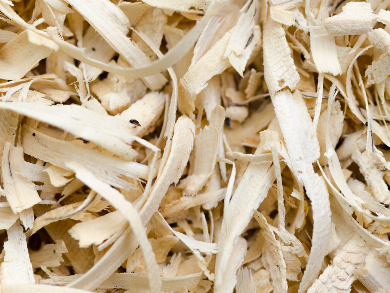Lignin is a component of wood and is created on a large scale as a waste product of the paper industry. It is usually used in low-value applications. This sustainable resource could, for example, be used to improve the mechanical properties of polymers. However, unmodified lignin does not mix well with the commonly used thermoplastic polymers.
Dan Kai, Institute of Materials Research and Engineering (IMRE), A*STAR, Singapore, Xian Jun Loh, IMRE, National University of Singapore, and Singapore Eye Research Institute, and colleagues have synthesized lignin-based copolymers that can be blended with polyesters. The team used a solvent-free ring-opening polymerization with a tin(II) 2-ethylhexanoate catalyst to create lignin−poly(ε-caprolactone-co-lactide) copolymers. These lignin-copolymers were then blended with polyesters (polycaprolactone or poly(L-lactic acid)) and turned into nanofibers using electrospinning.
The modified lignin is miscible with the polyester matrices and improves the mechanical properties of the nanofibers, making them stronger and tougher to break by elongation. In addition, lignin has many phenolic groups, which have an antioxidant activity that is retained in the final nanofibers. The team cultured fibroblasts on the nanofibers and was able to show that the material is biocompatible. According to the researchers, these results indicate a potential for biomedical or healthcare applications.
- Sustainable and Antioxidant Lignin–Polyester Copolymers and Nanofibers for Potential Healthcare Applications,
Dan Kai, Kangyi Zhang, Lu Jiang, Hua Zhong Wong, Zibiao Li, Zheng Zhang, Xian Jun Loh,
ACS Sustainable Chem. Eng. 2017.
DOI: 10.1021/acssuschemeng.7b00850



